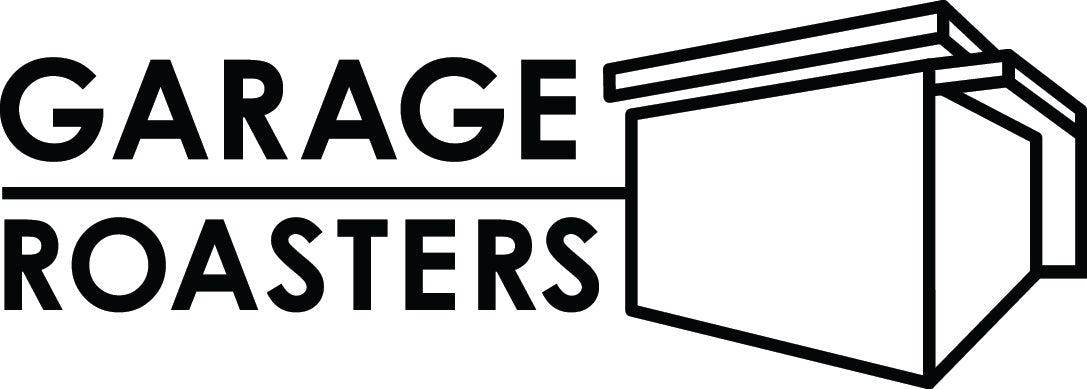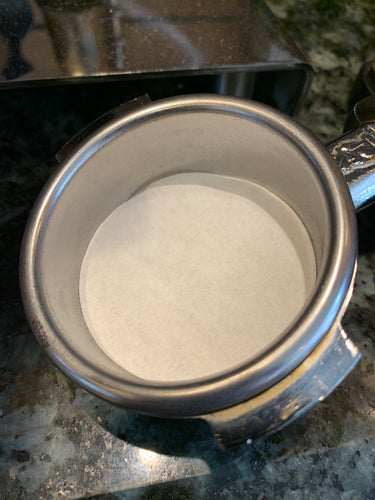Espresso coffee is a technical art... and it attracts people who think hard about how to produce a better extraction. There's been a recent trend to putting a piece of coffee filter paper in the bottom of the filter basket to improve espresso.
The rationale behind this extra step arises from the ground coffee particle size distribution which I've discussed in prior blog posts. Grinders are unable to produce perfectly evenly sized granules from whole coffee beans. It's the nature of a process which has an element of shattering that the products of the grinding regimen are uneven in shape and size. Let's grossly simplify the ground particle characteristics to two broad classes: fines and boulders. Boulders are particles which are significantly larger than the median, and fines are particles which are significantly smaller than the median. In extracting coffee from a filter basket full of compressed ground coffee a process called fines migration occurs as pressurised hot water is applied to your filter basket. Small coffee particles move within the coffee puck because of the differential pressure between the group head (high pressure) and the space below the portafilter (low pressure). Some fines will end up in the small holes in the bottom of the portafilter and clog those holes up thus increasing extraction time and also reducing extraction yield. Putting a filter paper in the bottom of the portafilter stops the fines from clogging these holes and therefore reduces extraction time and increases extraction yield. The resultant extractions tend to be flavoursome, with brighter acidity and less texture (some components of texture arise from the fines themselves entering the coffee cup).
I've tried this a number of times and found the coffee more acidic than is my preference. Your mileage may vary. If you're curious about this procedure though please try it and let me know what you discover!
To understand the hygroscopic nature of coffee grounds click here
To read about the roaster exhaust fan click here

